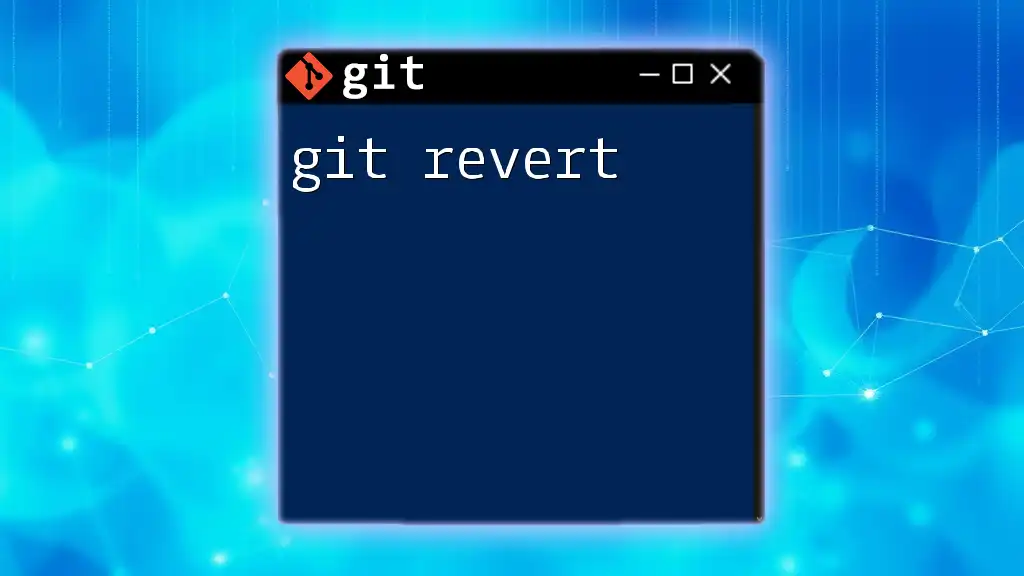The `git log --pretty` command allows you to customize the output format of the commit history, enhancing readability and focus on specific details.
Here's how to use it:
git log --pretty=format:"%h - %an, %ar : %s"
The Basics of Git Log
What is `git log`?
The `git log` command is a fundamental tool in Git that allows developers to view the commit history of their repository. This command outputs a list of commits that have been made to the repository, displaying detailed information about each commit, including the commit ID, author, date, and commit message. However, the default output can sometimes be overwhelming or difficult to read, especially in projects with extensive histories.
Why Use Pretty Formats?
Using pretty formats with `git log` allows users to tailor the output to better suit their needs. This can be particularly useful for streamlining the information presented, making it easier to analyze changes, track progress, or review commit messages. In a collaborative environment, a clearer commit log can enhance communication and facilitate better project management.
Common Pretty Formats in Git Log
Using the `--pretty` Flag
To customize the output of the `git log` command, you can use the `--pretty` flag. The basic syntax for invoking pretty formats is as follows:
git log --pretty=<format>
This command will allow you to specify a format that suits your preferences, enabling more effective visualization of your commit history.
Popular Pretty Formats
-
oneline
The `oneline` format is an abbreviated representation of each commit, perfect for getting a quick overview of the history. It displays one line per commit, showing the abbreviated commit ID and the commit message.Example:
git log --pretty=onelineThis command condenses the log, making it easy to see a high-level summary of all changes.
-
short
The `short` format provides a slightly more detailed view than `oneline`, showing the commit ID and the header information for each commit.Example:
git log --pretty=shortThis format is useful for when you need more context but still want a concise log.
-
medium
The `medium` format goes a step further than `short`, including the full commit message along with the commit ID and author.Example:
git log --pretty=medium -
full
The `full` format displays all the information about each commit, including the commit ID, author, date, and full commit message.Example:
git log --pretty=fullUse this format when you need detailed insights into each commit.
-
fuller
The `fuller` format is similar to `full` but includes additional information about the commit, such as the author’s email.Example:
git log --pretty=fuller -
custom
Tailoring a custom format allows you to specify exactly what information you want to see. Placeholders can be utilized to create a more meaningful representation. For instance:git log --pretty=format:"%h - %an, %ar : %s"In this command:
- `%h` represents the abbreviated commit hash
- `%an` stands for the author's name
- `%ar` shows the relative time of the commit (e.g., "2 days ago")
- `%s` is the subject (commit message)
Additional Formatting Options
Combining with Other Flags
You can enhance the functionality of `git log` by combining pretty formats with other flags.
-
Using `--abbrev-commit`
The `--abbrev-commit` flag shortens the commit hash, which can simplify the output further.Example:
git log --pretty=oneline --abbrev-commit -
Adding `--graph` for Visualization
Including the `--graph` option creates a visual representation of the branching and merging in your commit history, making it easier to understand the project’s evolution.Example:
git log --graph --oneline -
Filtering by Date and Author
Filtering logs by date or author can assist in focusing on specific contributions or changes.To view commits from a specific time frame, you can use:
git log --since="2 weeks ago" --pretty=format:"%h - %s"If you want to filter by author, the command would look like:
git log --author="Your Name" --pretty=format:"%h - %s"
Best Practices for Using `git log pretty`
Choosing the Right Format
Selecting an appropriate format is essential for readability and usability. Consider the audience and purpose of the log output. If sharing with collaborators, a format that includes detailed information might be best. For personal review or quick assessments, a summary format like `oneline` may suffice. Experimenting with various formats is encouraged to discover what works best for your workflow.
Combining Pretty Formats
There may be situations where combining several formats is beneficial. You might want to use `--pretty=format` alongside `--graph` or filter by date while customizing the output. This flexibility allows you to create a tailored log that meets specific needs.
Advanced Customization Techniques
Creating Aliases for Commonly Used Commands
For time efficiency, you can establish aliases in Git that represent customized log commands. This saves repetitive typing and increases productivity. For example:
git config --global alias.lg "log --pretty=format:'%h - %an, %ar : %s' --graph"
Now, in the future, you can simply run `git lg` to display your preferred log format instantly.
Scripting and Automation
For users looking to automate log generation or reporting, scripting can facilitate this process. A simple script can be created to generate daily log reports or summaries, ensuring that you stay updated without manual intervention.
Conclusion
Utilizing `git log pretty` formats can significantly improve how you access and interpret commit history within a Git repository. By customizing the log output, you not only enhance readability but also streamline the process of tracking changes and understanding project evolution. Remember to explore different formats and combinations to find what suits your needs best. Happy logging!
Additional Resources
For further reading, consider checking out the official Git documentation or exploring books and online courses dedicated to mastering Git commands. These resources can greatly expand your understanding and efficiency with version control practices.








